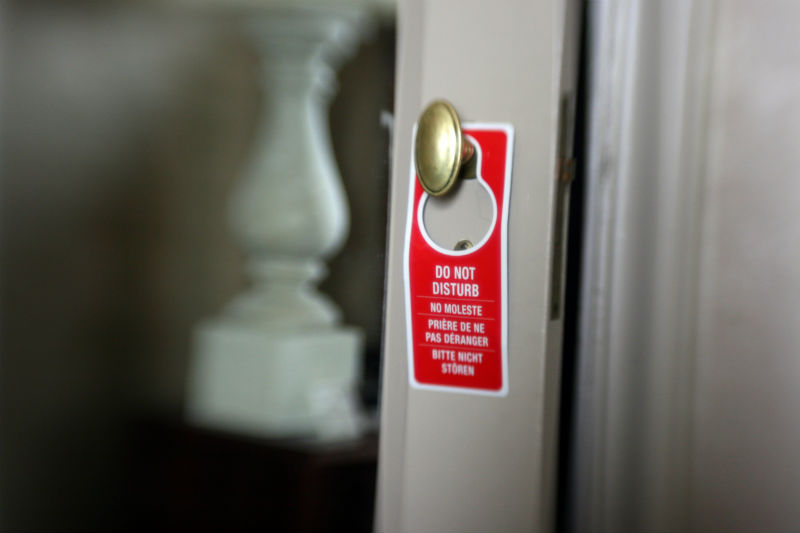
I can’t recommend reading over 60 sex advice manuals. I spent several months doing this and it results in a particular combination of sadness, anger and frustration that I’d rather never repeat.
The reason for my painful few months was my new book, Mediated Intimacy: Sex Advice in Media Culture with Rosalind Gill and Laura Harvey. The book explores the changing forms of “sexpertise” and how they influence ideas and practises around sex. In addition to sex manuals, we studied blogs, magazines, reality TV shows such as Sex Box (which actually gets people to have sex in a box), newspaper problem pages, websites, apps, and more.
We emphasise throughout our book that it’s rarely a matter of any sex advice being all good or all bad. Rather, sexpertise often opens up some things – in terms of ways of understanding or experiencing sex – at the same time that it closes down others. And the same text has the potential to be read in different ways by different readers. For example, somebody might read sex advice to get ideas, to enjoy sexual images, to find humour in it – or a combination of these.
But it’s also important to acknowledge just how deeply problematic the vast majority of mainstream sex advice is. Especially in this moment of #MeToo, and greater awareness of intersecting systems of privilege and oppression, it’s most concerning how few texts even mention consent, and how many assume that sex equates to penis-in-vagina intercourse, often depicted by endless images of young, white, slim, non-disabled, normative male/female couples.
When the panic around the messages young people receive about sex so often focuses on sexually explicit material, it’s about time we turned our attention to the insidious and disturbing messages that people are receiving from materials which are supposedly designed to educate, inform, and advise about sex.
So – in true sex advice “top tips” form – here are the top five problematic messages that we’ve found are perpetuated by the majority of sex advice.
1. There’s a set script for ‘proper’ sex
As sex therapist Clare Staunton puts it, the “kiss, kiss, boob, boob, penis in vagina” approach to sex is found everywhere. Even advice which tries to expand sex beyond this formula often defaults to an assumption that penetration is somehow better or more ideal than other forms of sex. In addition to the number of sexual identities and practices this excludes or marginalises, it also makes ongoing consent more difficult as it is easy to simply default to the script without checking whether you find this pleasurable or whether it is what the other person wants.
2. Certain bodies are sexy and sexual, others aren’t
People are encouraged to engage in surveillance and disciplining of their bodies in order to have a sexy appearance, and to perform sexually. From the images found throughout mainstream sex advice it’s clear that older bodies, disabled bodies, and fat bodies are not deemed sexual given that they are absent or – if they ever do appear – clothed. Again, this marginalises many bodies, and encourages people to treat their bodies in unkind ways that takes them away from the potential for embodied erotic experiences.
3. Individuals are responsible for having great sex
The ideal self in sex advice is one who has banished repression, overcome taboos, dealt with any “issues”, and become a properly adventurous neoliberal lover. Sexual problems are almost always located within the individual – often a woman – who is also told they are responsible for improving themselves through various “technologies of sexiness” (toys, techniques, and so on). There’s very little consideration of how wider cultural messages and social structures frequently restrict our capacities for sexual desire and pleasure.
4. Pleasure is imperative (but restricted)
Sex advice emphasises that people must experience sexual pleasure – even suggesting that it’s an imperative of being a healthy person or having a healthy relationship. But there’s little unpacking of what pleasure is. Rather, it’s assumed that the range of acts presented in sex advice will be pleasurable – often equated with resulting in orgasm. There’s little consideration of the complex interweaving of pleasure and other experiences in sex (such as duty, shame, validation, disappointment, relief), or the ways in which goal-focused approaches to sex often result in less pleasure and more pressure.
5. No need to mention consent
Shockingly, hardly any mainstream sex advice we looked at mentioned consent in any detail. When it was touched upon it was almost always in relation to having safewords for kinky sex, with no sense that other forms of sex may also require consent, and that it may be about far more than just “saying no”. Advice about communication hardly ever gave consent as a reason for communicating, or as something that people might need to communicate about.
This is even more concerning considering that much sex advice actually gives messages that run counter to treating yourself – and others – consensually. For example, women are encouraged to provide unwanted quickies or forms of sex they did not enjoy so as not to risk losing the relationship, to allow partners to do anything they liked at the point of orgasm, or to begin having sex when they didn’t feel like it – because supposedly women don’t get into it until they’ve been doing it for a while.
![]() The most recent NATSAL survey found that nearly half of people report a sexual difficulty of some kind. This seems unsurprising given the the pressures and restrictions sex advice places on sex, and the lack of advice about how to expand our erotic imaginations, to tune into and communicate our desires, and to have sex in ways that don’t risk further non-consensual experiences.
The most recent NATSAL survey found that nearly half of people report a sexual difficulty of some kind. This seems unsurprising given the the pressures and restrictions sex advice places on sex, and the lack of advice about how to expand our erotic imaginations, to tune into and communicate our desires, and to have sex in ways that don’t risk further non-consensual experiences.
This article was originally published on The Conversation. Read the original article.


Rate and Review
Rate this article
Review this article
Log into OpenLearn to leave reviews and join in the conversation.
Article reviews